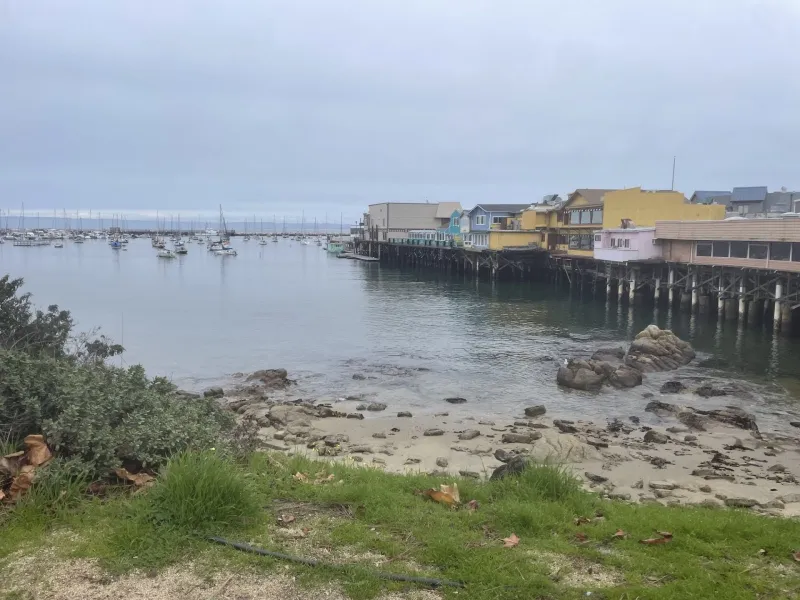John Steinbeck and I share three passions: writing, marine biology and Monterey Bay. Before coming to Stanford, I had only sparse knowledge about the Hopkins Marine Station in Pacific Grove on the Monterey Peninsula — and certainly did not know that the 11-acre research facility inspired many of my favorite author’s short stories and novels, including “Cannery Row” and the “Sea of Cortez.”
Throughout my freshman year, I have had the privilege to visit Hopkins through two introductory seminars (IntroSems) in marine biology, BIO 12N: The Sensory Ecology of Marine Animals and OCEANS 6N: Ocean Conservation: Pathways to Solutions. The drive from campus to Monterey is about two hours via a scenic route encompassing the Gabilan and Sierra de Salinas mountain ranges.
As testament to the transformative power of the IntroSem program, my experiences beyond the Stanford bubble and along the coastline have sparked my curiosity for oceanography, as well as marine conservation.
A highlight of my trips has been the wealth of immersive, innovative research possibilities offered beyond Stanford’s main campus. With its magnificent landscape and biodiversity, Monterey represents a natural laboratory of unparalleled opportunities for learning, observation and discovery. Students also have the chance to work in historic facilities, such as the Alexander Agassiz Laboratory. The Harold A. Miller Library is another special gem, harboring materials such as Ed Ricketts’ annotated notes on marine life.
The town of Monterey itself is both beautiful and vibrant, filled with quaint pastel-colored storefronts that are interconnected by walkways that once facilitated access between cannery factories. There are also a variety of paths winding alongside the shore, and the area offers some of the most breathtaking views along the Northern California coastline. My favorite spot is Old Fisherman’s Wharf, where I recommend enjoying a sandwich from Ike’s while watching sea lions laid out on the rocks, absorbing the sunshine.
A centerpiece of any visit to Monterey is the world-famous Aquarium, which was founded by David and Lucille Packard in 1984 on the site of an abandoned sardine cannery. Our class received a private tour of the aquarium’s operations and equipment, replete with entertaining anecdotes as well as the opportunity to touch live jellyfish and interact with divers. While exploring the aquarium’s range of exhibits and organisms is itself exciting, witnessing the expertise and technology involved behind the scenes only enriched my visit.
I also highly recommend embarking on a trip with the Monterey Bay Whale Watch. During our three-hour boat ride, we saw a variety of marine life, including gray whales, dolphins, seals, sea lions and sea otters. As this was my first time seeing these majestic creatures in their natural habitat, the experience felt similar to how I would imagine early explorers reacted to the marvels of the sea millenia ago.
Standing at the prow of the boat, with the salty wind whipping back my hair and water spraying my face, watching the horizon open indefinitely before me, I felt my stomach drop multiple times during an exhilarating journey that felt much like a natural roller coaster. Memorably, I also bonded with my classmates as we uniquely experienced a sense of collective instability alongside the thrills of cresting 6-8 foot waves.
Perhaps in the most direct way possible, this expedition enabled me to connect with nature by experiencing the profound power and serenity of the open ocean. Embracing the uncertainty of the waves and the enchantment of the unknown, I felt transported in time to an era of exploration and discovery.
It is experiences like these that cannot be replicated in the classroom — and Monterey Bay is unique in unlocking the extraordinary wonder of centuries of ocean knowledge and revelation, along with providing an opportunity for reflection and self-realization.
